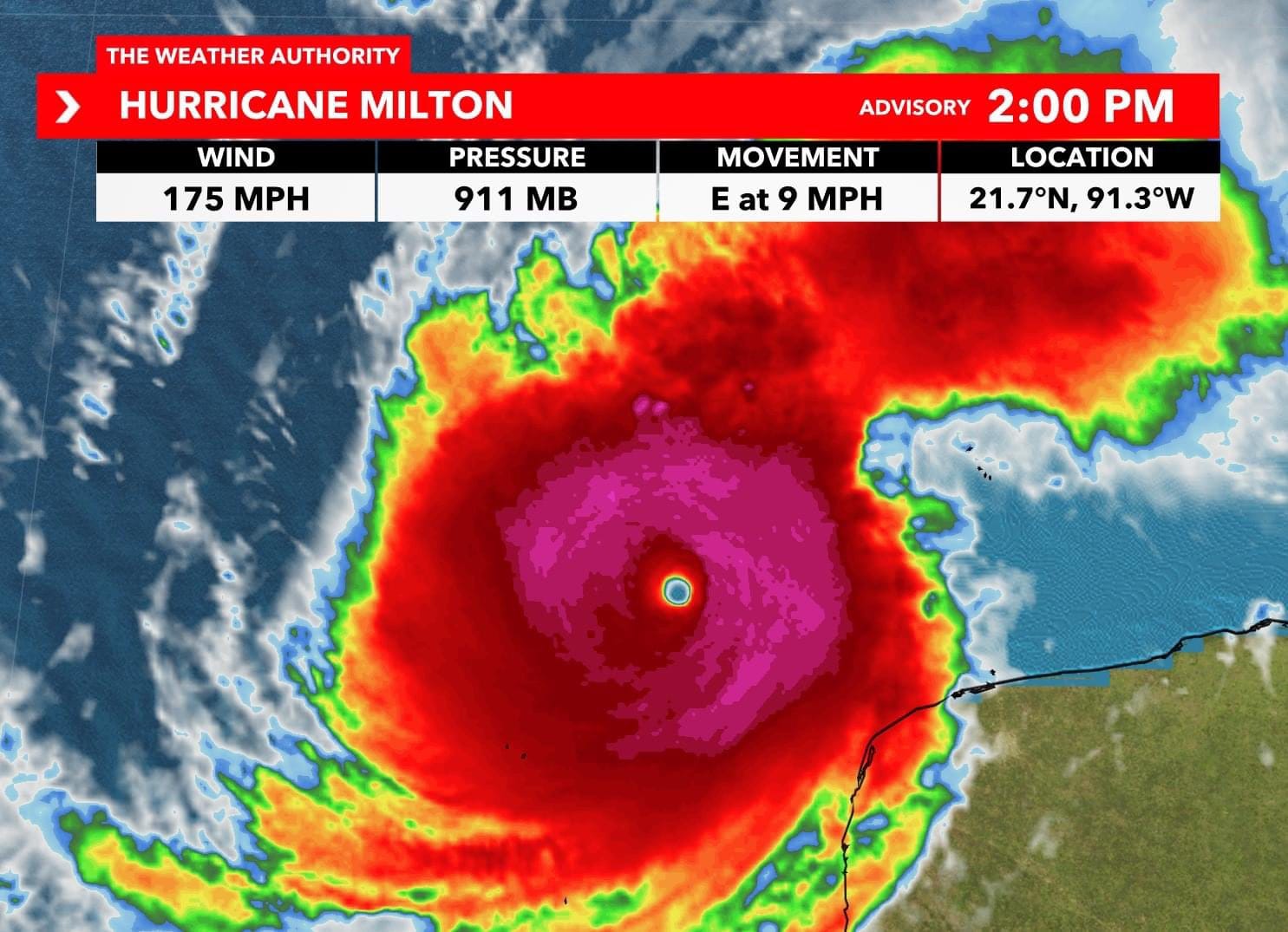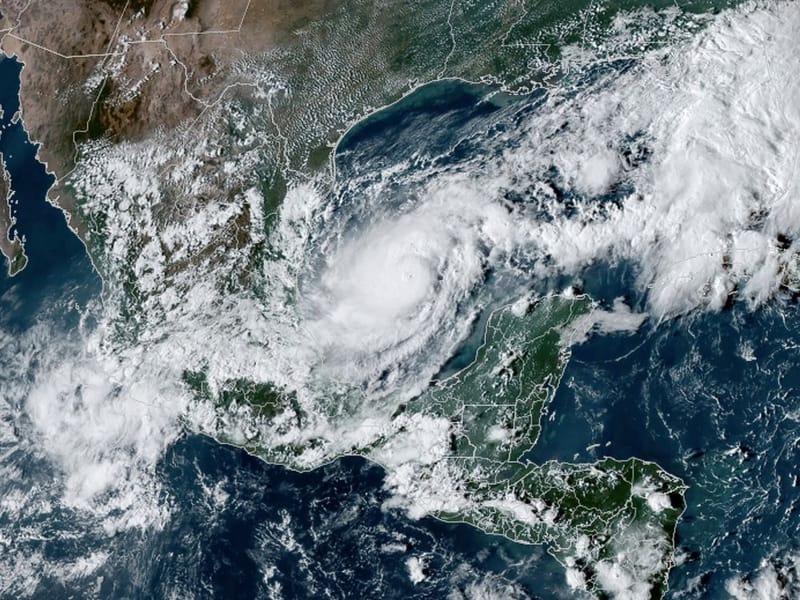Hurricanes Milton and Helene: Public Speculation on Weather Manipulation Swirls
In the wake of Hurricanes Milton and Helene's devastating paths through the southeastern United States, a storm of a different kind has been brewing among US citizens: theories of weather manipulation. These hurricanes, marked by their intensity and unexpected behavior, have led to widespread speculation about whether human
In the wake of Hurricanes Milton and Helene's devastating paths through the southeastern United States, a storm of a different kind has been brewing among US citizens: theories of weather manipulation. These hurricanes, marked by their intensity and unexpected behavior, have led to widespread speculation about whether human intervention, particularly through technologies like HAARP, chemtrails, and cloud seeding, could have been used to enhance their destructive power.
Hurricane Milton is targeted geo-engineered storm being used as a weapon.
— Stew Peters (@realstewpeters) October 7, 2024
Only four storms in history have made a similar path. NONE were serious hurricanes and most were in the 1800’s.
Hurricanes don’t develop in the western Gulf of Mexico and head straight east on a beeline… pic.twitter.com/k5PrMAPKtO
The Surge of Conspiracy
The theory centers around the notion that these hurricanes were not just natural occurrences but were "amped up" or directed by man-made means for various motives, ranging from geopolitical strategies to environmental control experiments. Here's how these theories have unfolded:
- HAARP (High-frequency Active Auroral Research Program): Despite its official purpose for ionospheric research, HAARP has long been a focal point for conspiracy theorists. Social media lit up with claims that HAARP's ionospheric heaters could manipulate weather patterns. Discussions on platforms like X cited "unnatural cloud formations" visible in satellite images during Hurricane Milton, suggesting electromagnetic frequencies were at play to intensify the storms.
- Chemtrails: Another vector of speculation involves chemtrails, where the condensation trails from aircraft are believed to contain chemicals or biological agents for weather control or other secretive purposes. Users like @USA_Patriot_Amy on X have pointed to "strange patterns" in the sky before Hurricane Helene's intensification, suggesting these were chemtrails used to seed clouds or alter atmospheric conditions.
- Cloud Seeding: Historical attempts at weather modification, like Project Stormfury, which aimed to weaken hurricanes by cloud seeding, have been revisited in public discourse. Some argue that advancements in technology since those experiments might now allow for more effective manipulation, leading to claims like those made by @rolandsix, who suggested that tropical depressions were seeded and then manipulated using HAARP to supercharge the storms.
- Anomalies in Storm Behavior: The rapid intensification of these hurricanes before landfall, their odd trajectories, and unexpected changes in strength have been highlighted as anomalies not typical of natural storm behavior. For instance, the "armageddon-like scenes" in Asheville due to Hurricane Helene led to questions on whether this was due to weather manipulation, referencing theories of deliberate environmental disasters.
🚨#BREAKING MAJOR Hurricane MILTON Might be the STRONGEST Atlantic Hurricane We have ever seen!
— In2ThinAir (@In2ThinAir) October 7, 2024
Current Record is Hurricane Wilma which was 882
We WILL Break the Speed Record of 190 as well!
This may be the Strongest CYCLONE EVER!
DO you STILL believe this is natural?!… pic.twitter.com/9S2NRHBFAv
Hurricane Milton is undergoing one of the fastest rapid intensifications ever observed in the Atlantic.
— Colin McCarthy (@US_Stormwatch) October 7, 2024
It is now a 155 mph Category 4 storm, just 2 mph shy of Category 5 status.
Not a single weather model predicted the storm would strengthen this quickly. pic.twitter.com/lqX76Ryvqv
Public Sentiment and Scientific Pushback
The public's embrace of these theories is not without pushback from the scientific community and fact-checkers:
- Scientific Rebuttals: Experts refute the idea of weather manipulation at the scale suggested by these theories. For instance, HAARP's operations are explained as affecting the ionosphere, far above where hurricanes form. NOAA and meteorologists have consistently debunked claims of weather manipulation, pointing to natural variability in hurricane behavior.
- Misinterpretation of Data: What conspiracy theorists might interpret as "anomalies" or "evidence" of manipulation, like unusual radar signatures or sudden changes in storm paths, are explained by meteorologists as natural phenomena or misreadings of data.
- Historical Context: The mention of past weather modification experiments like Project Stormfury serves as a reminder that while the science of weather manipulation exists, its effectiveness and current application remain highly debated and largely theoretical within scientific circles.
Conclusion
The debate over whether Hurricanes Milton and Helene were manipulated reflects deeper societal trends towards skepticism of official narratives and a fascination with conspiracy. While no concrete evidence supports these manipulation theories, they reveal a public increasingly wary of the unseen forces they believe could be at play behind natural disasters. This dialogue, while fraught with misinformation, also underscores a need for greater transparency from authorities on weather research and the limitations of current technology in weather control. As science progresses, perhaps the day will come when these theories move from speculation to verifiable fact or fiction, but for now, they remain a tempest in the teapot of public discourse.

